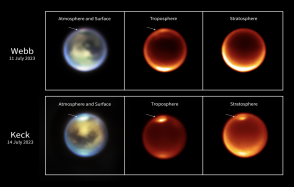
Active weather and organic chemistry on Titan: new observations from the James Webb space telescope
The James Webb space telescope (JWST), in collaboration with the ground-based Keck II telescope, has for the first time observed cloud convection in t...

